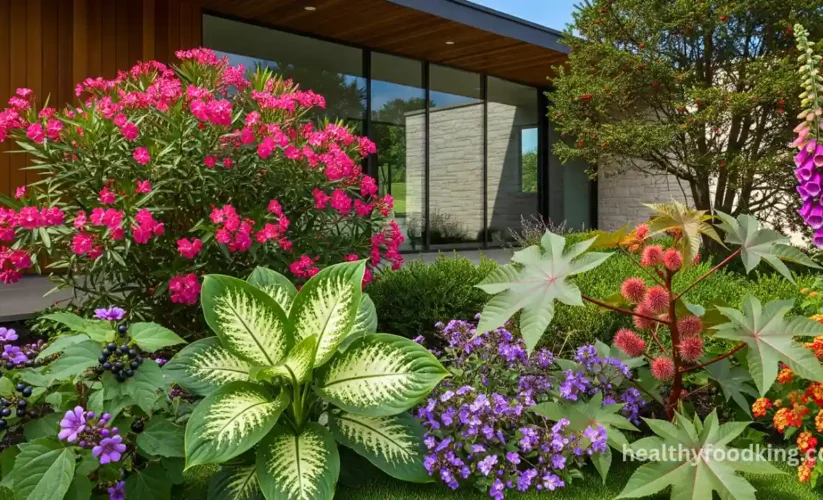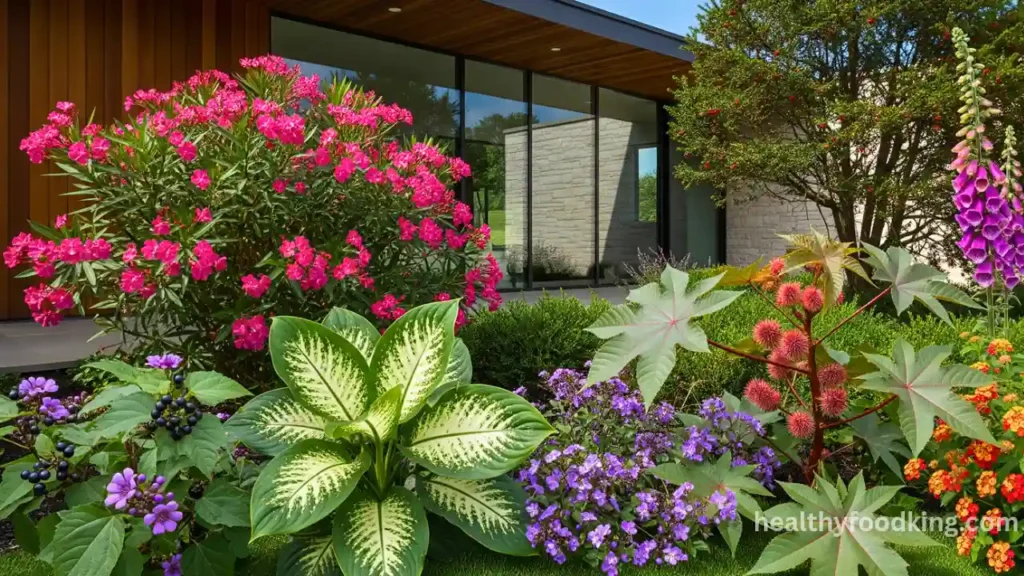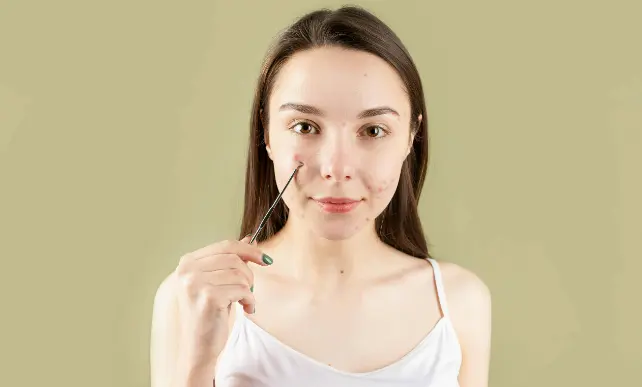
Avoid These 7 Plants Near Your House for Better Health
Your house is supposed to be a place of safety and well-being. Yet did you know that some of the most common plants can be bad for your health when they grow too close to your house? The plant may release toxins, attract pests, or bring about allergies. This may even endanger your household.

These are seven plants not to plant around your home to prevent risks to your residence and your family.
1. Oleander: Beautiful but Deadly
Oleander is a rather popular plant due to its bright color of flowers and simplicity to maintain them. However, the whole plant is poisonous. The consumption of a small amount can lead to vomiting or heart issues in case it is a child or a pet. Its leaves and flowers are terribly harmful. Oleander should be located where children do not play and do not get in the entrance to your house.
2. Foxglove: Attractive but Harmful
Foxglove is a tall, colorful flower plant. They make gardens beautiful to the eye, but there is a danger associated with this beauty. Foxglove contains a chemical called digitalis, which can act on the heart. Contact or inadvertent ingestion of the plant may cause severe health problems. Foxglove is toxic and should not be planted close to doors, windows, or other areas where children or pets play.
3. Dieffenbachia: A Common Indoor Danger
“Dumb Cane” is another name for this plant. Dieffenbachia is one of the most popular houseplants. On the one hand, it is visually very pleasing, but on the inside, it contains little sharp crystals. If the plant is handled or chewed, the skin, mouth, and throat might get irritated. There is a possibility of short-term speech difficulty if the plant is ingested. To be safe, keep it out of reach of kids, animals, and places with a lot of traffic.
4. Nightshade: Hidden Poison
Nightshade is a family of plants that consists of tomatoes and potatoes. However, a few of the wild kinds that usually grow close to houses are extremely poisonous. The leaves and fruit of these plants are full of a substance that, if ingested, could cause harm. Moreover, little, colorful berries might lure kids and animals. So, if there are any wild nightshade plants in your garden, take them out immediately.
5. Castor Bean Plant: A Toxic Giant
Castor Bean refers to the plant, which is frequently cultivated due to its large leaves and special touch. Their seeds also have a deadly poison (Ricin). The ingestion of just one seed can prove deadly. Do not plant these near gardens, boundaries, or where children have to play. Explain to your family the hazards of contact with/ eating any portion of the plant.
6. Lantana: Colorful but Irritating
Lantana is a common decorative hedge due to its colorful flowers. Unfortunately, it is toxic to both people and pets. The berries and leaves are known to lead to skin rashes, vomiting, and liver damage when consumed. You should not plant lantana near walkways, doors, or outdoor play areas to reduce exposure to your loved ones.
7. Yew: Small Plant, Big Risk
Yew plants are green and are usually used as landscape plants. Yet their seeds and leaves are highly poisonous. Consumption of any of its parts can also cause dizziness, difficulty breathing, as well as heart failure. Yew plants are particularly harmful when there are children and pets around who could touch or even consume some of the parts of it.
Tips for Safe Gardening
- Before you plant a plant in your garden, always learn about it.
- Avoid toxic plants in places where children and pets can get access to them.
- Wear gloves when handling plants that may be harmful.
- Instead, prefer to use safe plants like marigold, hibiscus, or jasmine.
- Explain the dangers of some plants to your family.
Final Thoughts
The gardens can beautify your house. However, when the incorrect plants are used, this poses major health hazards. Oleander, Foxglove, Dieffenbachia, Nightshade, Castor Bean, Lantana, and Yew may be beautiful, but they can also be harmful as they grow close to your house. Safety should always be a top priority, and only select plants that are safe for your family.
Disclaimer:
This article provides some basic safety information. It’s best to consult a gardening or healthcare professional before removing or handling plants.






